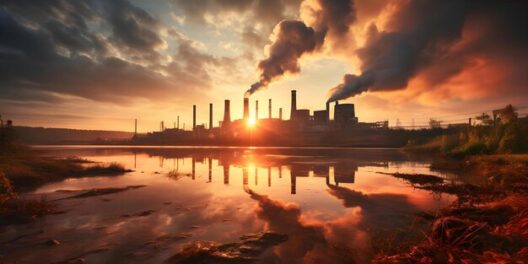In the complex tapestry of Earth’s atmosphere, the ozone layer plays a critical role that often goes overlooked. This thin layer of ozone molecules, located in the stratosphere, absorbs the majority of the sun’s harmful ultraviolet (UV) radiation. While several discussions have arisen about ozone depletion, it is essential to delineate the relationship between ozone layer loss and global warming, two prominent environmental concerns that emerge from distinct but interconnected atmospheric phenomena.
To begin unraveling this relationship, one must first understand what constitutes the ozone layer. Comprising a triatomic molecule (three oxygen atoms), ozone (O3) acts as a shield, protecting life on Earth from the pernicious effects of UV rays. The significance of this cannot be underestimated: excessive exposure to UV radiation can lead to severe health issues, including skin cancer, cataracts, and weakened immune systems. Moreover, it poses a great threat to various ecosystems, disrupting growth patterns in phytoplankton, which form the bedrock of aquatic food webs.
Yet, ozone depletion manifests through anthropogenic activities, primarily via chlorofluorocarbons (CFCs) and similar compounds. These chemicals, heralded for their utility in refrigeration and aerosol propellants, inadvertently rise to the stratosphere, where they undergo photodissociation, releasing chlorine that catalyzes ozone destruction. Consequently, the reduction of the ozone layer has become a pressing environmental issue, warranting global attention and intervention.
While it is evident how depletion of the ozone layer adversely affects UV radiation penetration, the question arises: does this phenomenon directly contribute to global warming? The answer is nuanced. Notably, global warming primarily results from the accumulation of greenhouse gases (GHGs) such as carbon dioxide (CO2), methane (CH4), and nitrous oxide (N2O) in the atmosphere. These gases trap heat, leading to the Earth’s temperature rise over time. The interplay between ozone depletion and global warming is indirect, yet their intersection is worthy of exploration.
As the ozone layer thins, it impacts temperature profiles in the stratosphere and troposphere alike. The stratospheric cooling due to ozone depletion can appear paradoxical when juxtaposed against the warming observed at the surface. This vertical asymmetry can lead to shifts in atmospheric circulation patterns, such as altering jet streams and influencing weather systems that, in turn, contribute to the warming effect. In this regard, the loss of ozone can be a facilitator of climate changes that bolster global warming rather than a direct contributor.
Furthermore, research indicates that as the ozone layer diminishes, the enhanced amount of UV radiation can lead to the production of secondary pollutants, particularly tropospheric ozone, a detrimental greenhouse gas. When UV radiation interacts with various emissions from vehicles and industrial sources, it fosters a photochemical reaction that generates ground-level ozone, which is not only a hazardous air pollutant but also a potent greenhouse gas. This contributes incrementally to the greenhouse effect, highlighting the intricate connections between ozone behaviors and climatic consequences.
Another critical factor in this conundrum is the feedback mechanism between the ozone layer and climate system changes. As temperatures in the stratosphere decline due to increased ozone loss, it can influence polar oscillations, affecting weather patterns globally. Such changes can exacerbate the warming effects of climate change, creating a feedback loop that not only accelerates warming but also intensifies the vulnerabilities of ecosystems already on the brink.
Moreover, the socio-economic dimensions of ozone depletion should not be disregarded. The ramifications extend far beyond environmental degradation. Reduced agricultural yields, increased health care costs due to UV-related illnesses, and international trade disruptions due to altered weather patterns have profound implications for global economies. Consequently, the loss of the ozone layer, while distinct in its mechanism, can create an intersectionality with global warming that exacerbates existing crises.
Compounding these issues is the fact that tackling climate change typically emphasizes GHG reductions, often inadvertently sidelining ozone layer conservation. Nevertheless, both challenges demand urgent, concerted action. The Montreal Protocol, which was enacted to curb CFC emissions, serves as a beacon of hope, illustrating that international cooperation can yield palpable results. Observations indicate that the ozone layer is on track for recovery, with projections suggesting near-full recovery by mid-century if current policies remain in effect.
In conclusion, while the loss of the ozone layer does not directly instigate global warming, the relationship is intricate and consequential. Its depletion influences atmospheric dynamics that can exacerbate climatic warming and alters the production of harmful greenhouse gases. The zeitgeist must evolve to appreciate the interconnectedness of environmental issues, recognizing that protecting the ozone layer safeguards not only terrestrial life but also fortifies the climate system against the inexorable march of global warming. As awareness grows and actions align, a synergistic approach to environmental stewardship becomes imperative, championing both the ozone layer and global climate among our highest priorities.






